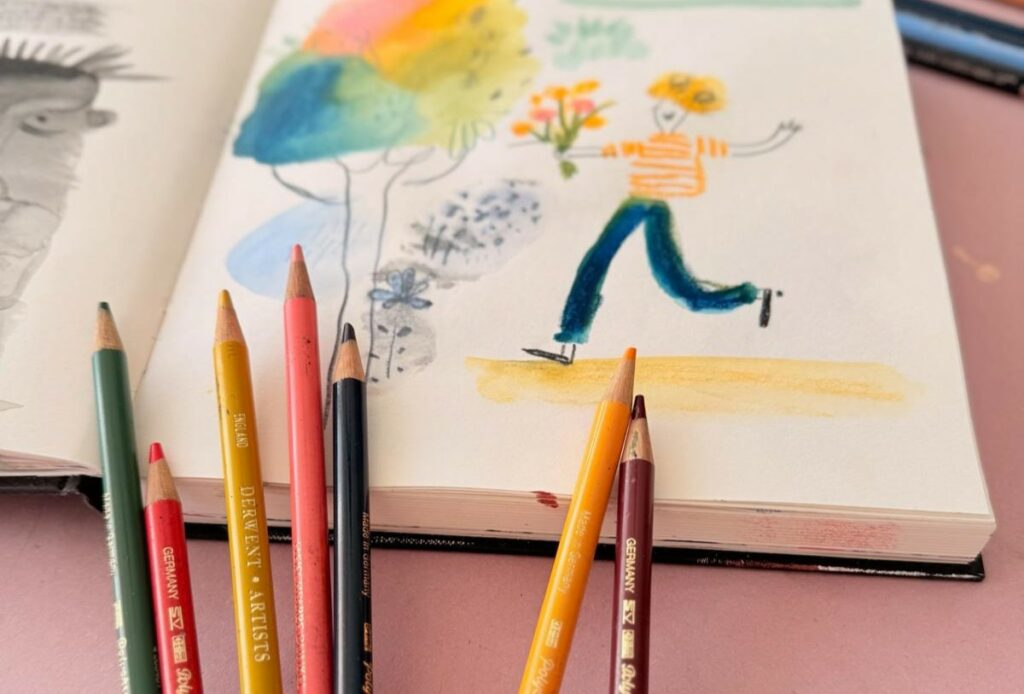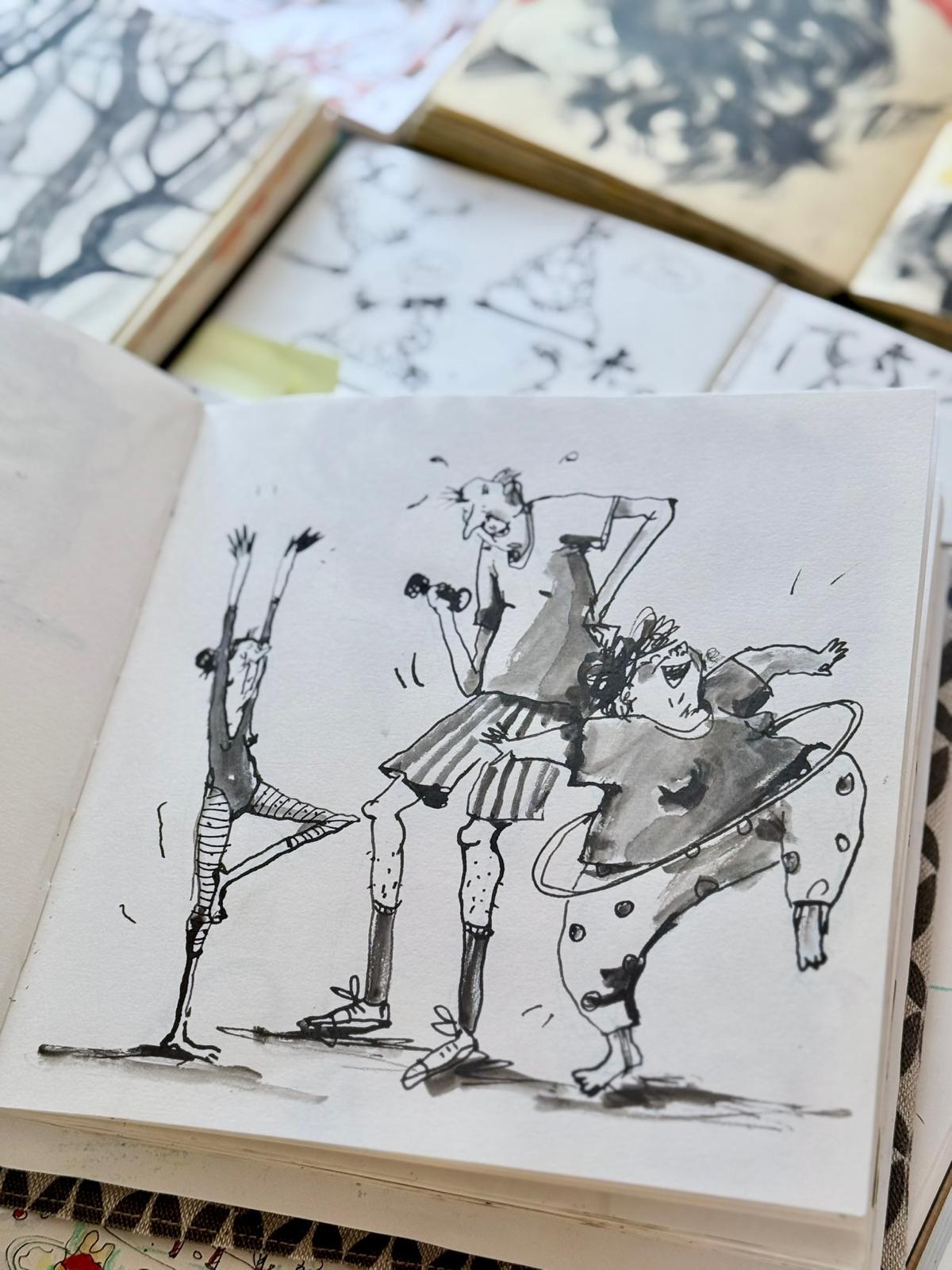Have you ever experienced that moment of sudden insight, when everything clicks into place, and a new understanding illuminates your mind? That’s precisely how I felt when I discovered the art of sketching from life.
My journey began in Bologna, during a course led by Victoria Semykina, an illustrator I deeply admire. Since then, I’ve seized every opportunity to create live sketches outdoors, an essential practice for any illustrator. You might wonder why this is so important. Let me share my experience.
When I enrolled in the children’s illustration programme at Cambridge, our first term focused on drawing from life. Prior to this, I had never sketched outdoors or maintained a sketchbook. I struggled with the assignment, unable to grasp its purpose or how it would benefit my work in children’s illustration.
We were tasked with selecting a theme—such as small houses, people at bus stops, pet owners and their dogs, or bakeries—and spending three months capturing related scenes from life. The goal was to present several filled sketchbooks that reflected our chosen theme.
I considered this exercise a pointless waste of time. I had always drawn from imagination, relying on my own creativity, and that had served me well. Moreover, I felt uncomfortable sketching in public spaces and was dissatisfied with my attempts.
Only after years of delving deeper into illustration did I begin to understand the significance of drawing from life. This revelation came during Victoria Semykina’s sketching course, where I grasped its essence and realised how vital it is. So, if you’re aspiring to become a skilled illustrator, read on attentively.
What does sketching offer?
- Enhanced Observation Skills
Sketching compels you to notice details you previously overlooked—light, colour, poses, moods, and atmospheres. You engage deeply with your surroundings, rediscovering the world on a more profound, personal level. You process your environment through your own perspective. - Overcoming the Fear of the Blank Page
When sketching, there’s no time to fear a blank page; you’re focused on capturing what you see. You might fill half a sketchbook in a couple of hours, starting fresh every five minutes. - Development of a Unique Style
This was my most significant discovery. If you’re struggling to find your style, sketching can help. As your hand relaxes, you begin to draw intuitively, almost as if your hand moves on its own. Your attention is centred on capturing the moment, and in doing so, your authentic self emerges on paper. There’s no time to imitate others. - Improved Understanding of Perspective and Spatial Relationships
You’ll no longer need to meticulously measure vanishing points and horizons. By observing the world around you, you’ll intuitively grasp perspective, making your work more expressive and dynamic. - Enhanced Sense of Composition
You’ll learn to integrate your subject seamlessly onto a page or sketchbook spread. Initially, compositions may seem awkward, but over time, you’ll develop a sense of space, plan compositions effectively, and choose interesting angles. - Increased Speed and Fluidity in Drawing
Previously, you might have laboured over a drawing for hours or days, striving for perfection but losing its vitality. Sketching enables you to capture the essence in minutes, even seconds, simplifying the illustrator’s process. - Generation of Unique and Unconventional Ideas
The most intriguing stories unfold in real life around us. Snippets of others’ lives, conversations, and situations intertwine into captivating narratives. The best characters aren’t concocted in a home studio but observed daily on the streets—they’re alive and authentic. So, there’s no need to reinvent the wheel; simply step into the world and observe the myriad wheels in motion, ready to be sketched.
Now, when asked for advice by aspiring illustrators, I suggest taking a sketchbook and drawing outdoors. In English, this practice is known as observational drawing. To observe means to watch attentively. Before you can draw exceptionally well, you must first learn to observe.
But how do you begin? What tools should you bring? How should you draw? What should you focus on? What’s important, and what’s secondary? These questions naturally arise, and addressing them is the first step toward mastering the art of sketching.


